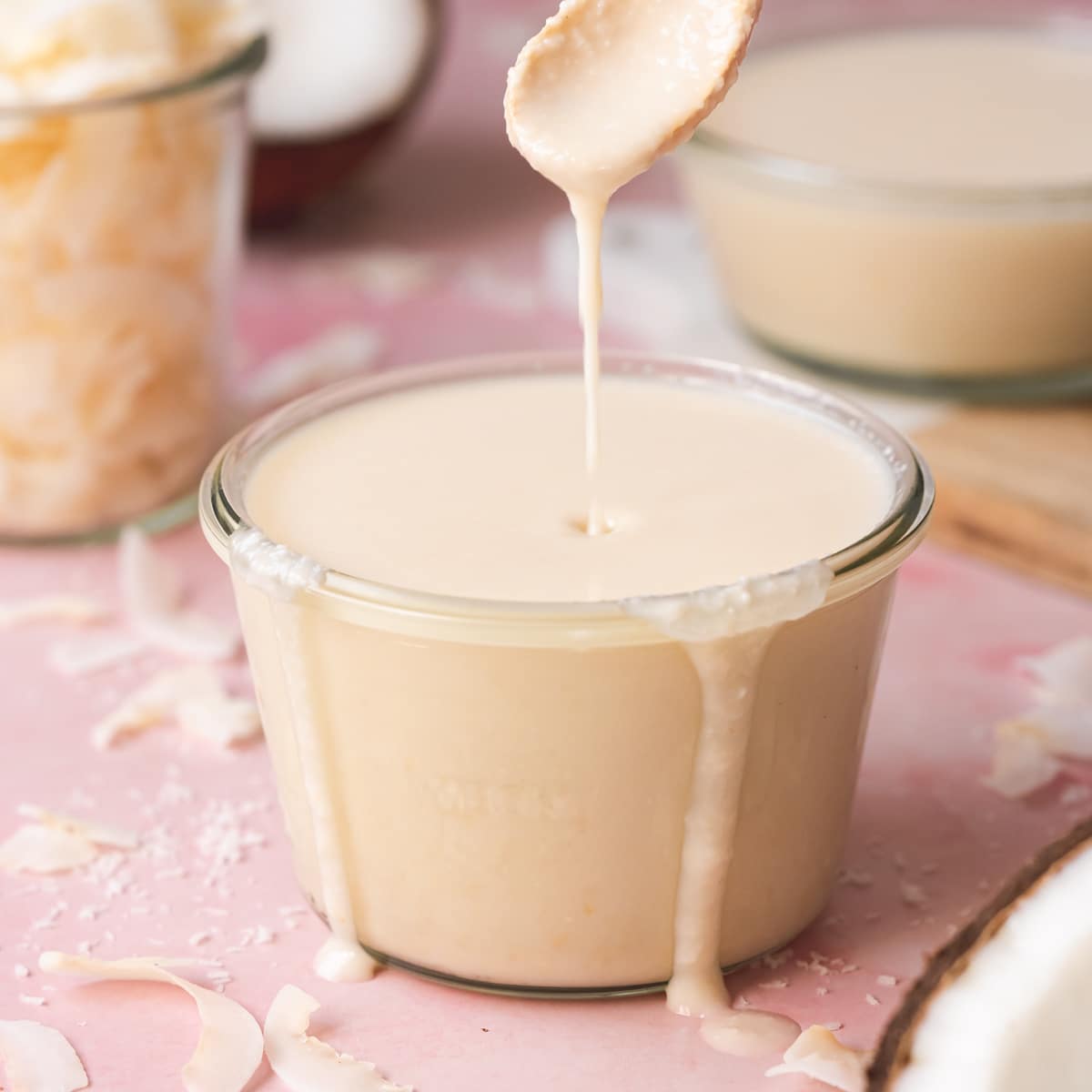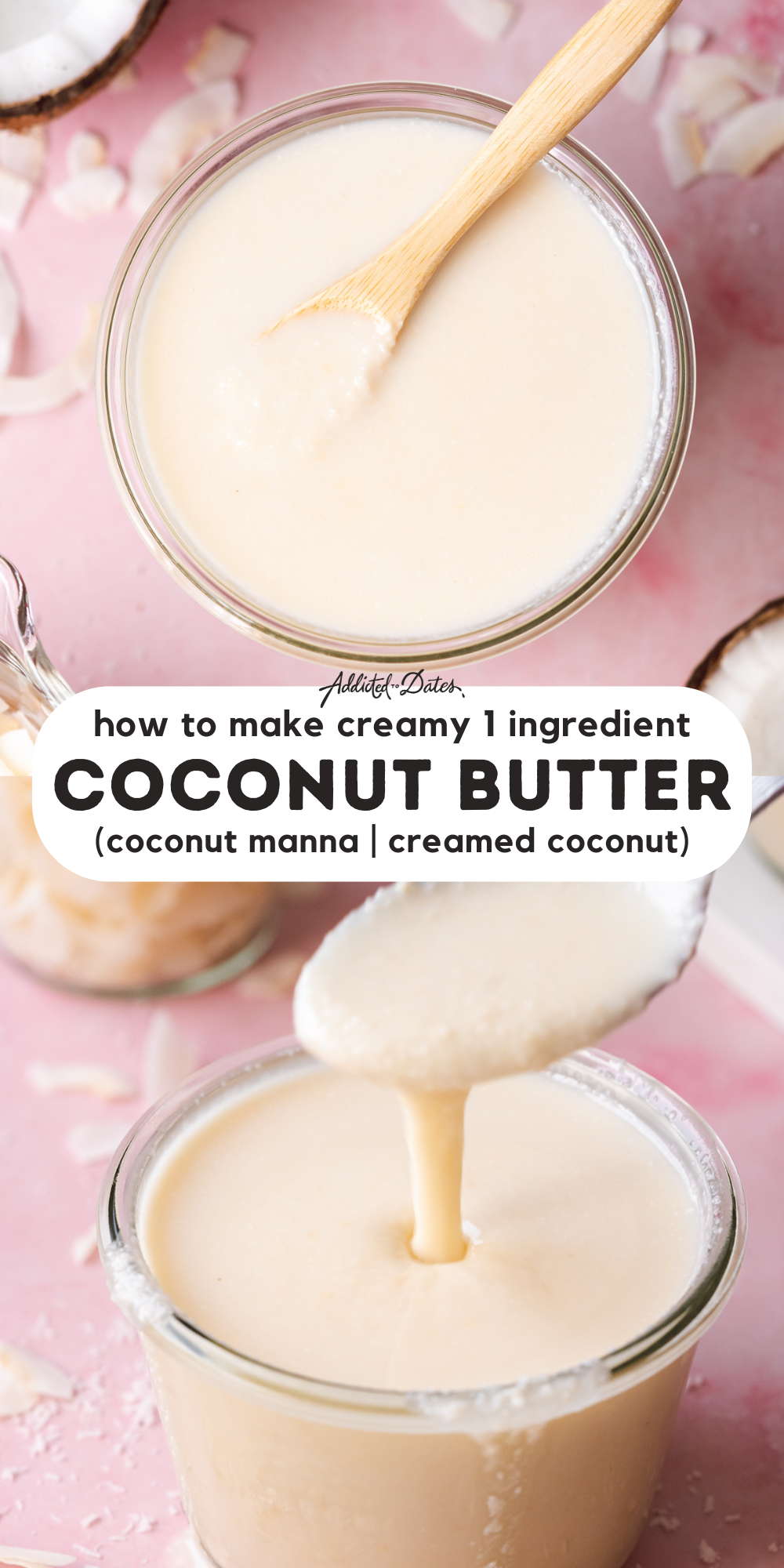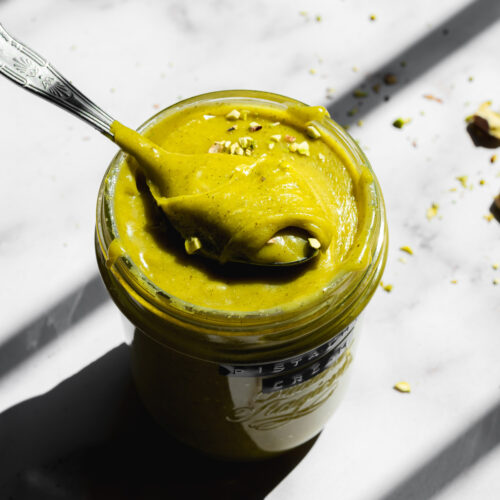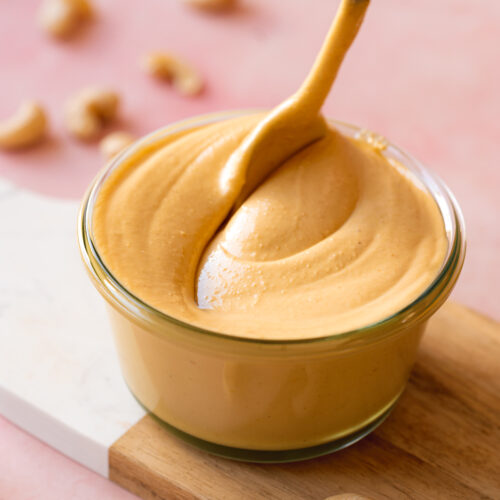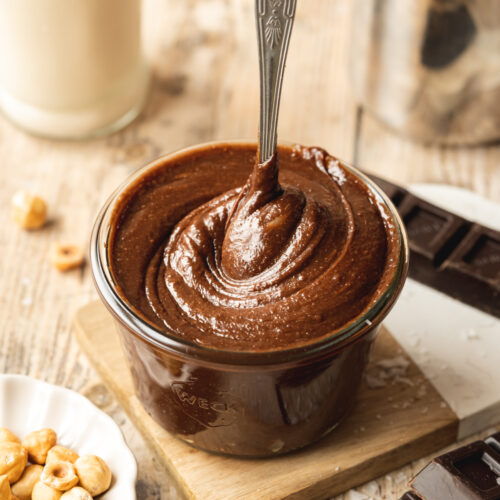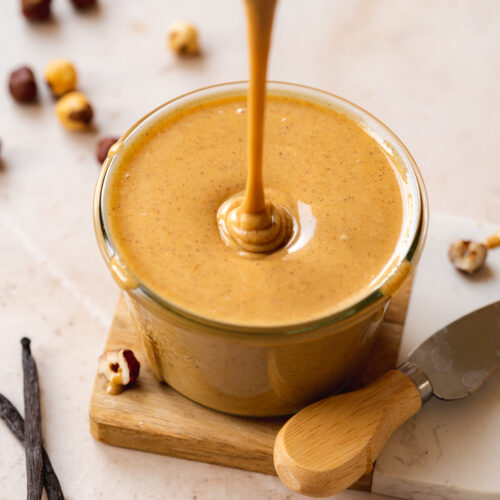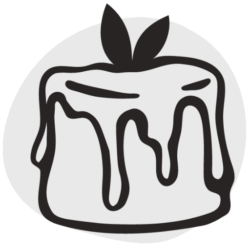This creamy homemade coconut spread is perfect for slathering on toast, drizzling on pancakes or oatmeal, or as an ingredient for raw desserts like these homemade bounty bars.
Jump to:
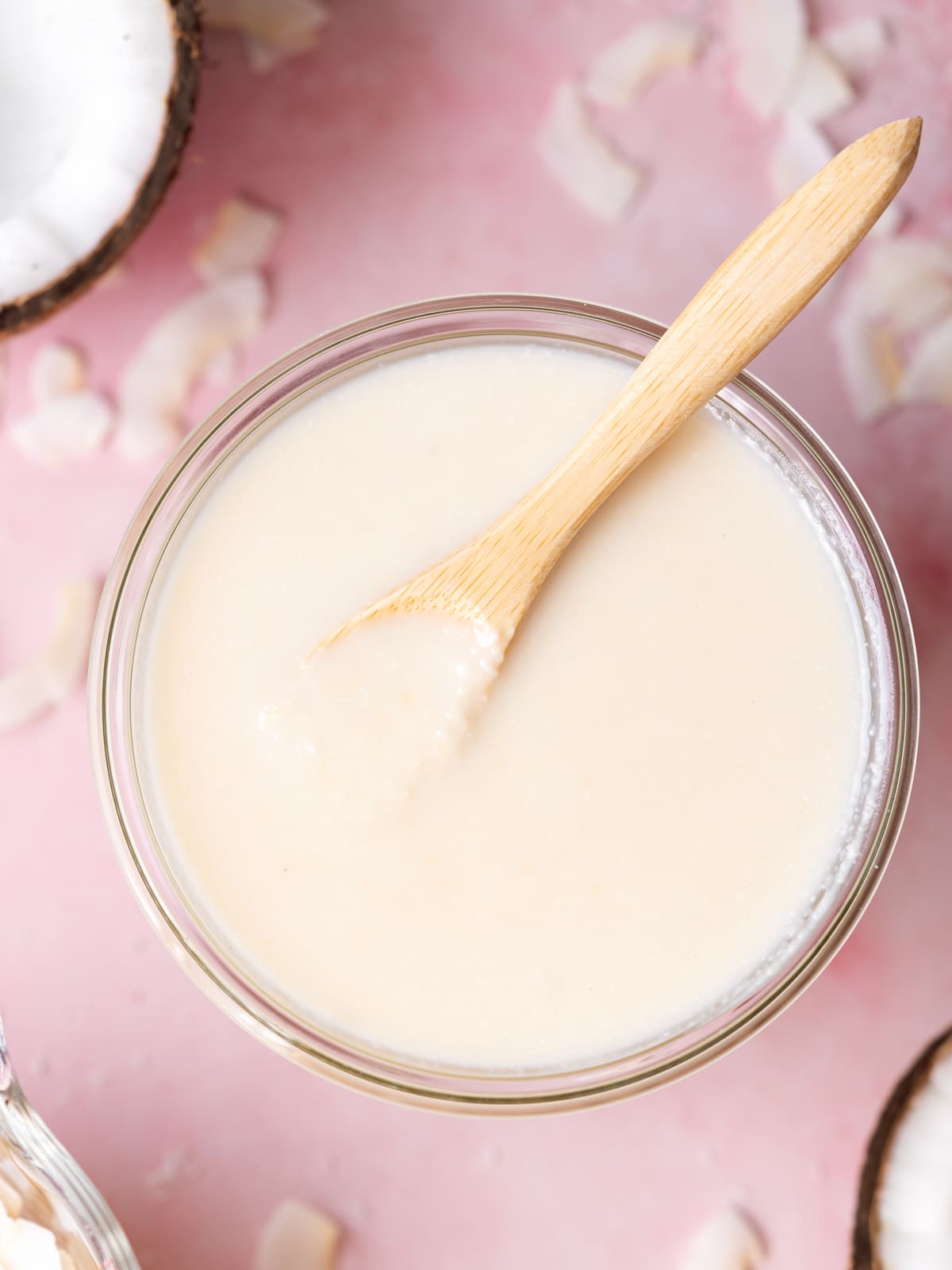
🥥 What is Coconut Butter?
Coconut butter is made by blending dried coconut into a luscious purée, sort of like hazelnut butter, cashew butter, or peanut butter, but coconutty!
It uses whole coconut flesh both meat and oil (unlike coconut oil which doesn't use the coconut meat). It has an intense coconut flavor and can be used in both sweet and savory dishes.
Also known as coconut manna or creamed coconut, you can usually find it in a health food store or in the international food aisle in a grocery store.
If you love coconut desserts try my coconut macaroons, coconut panna cotta tart, and coconut truffles next!
🧾 Ingredients Needed
As promised, dried coconut flakes are the only ingredient you need to make this raw coconut butter recipe:
Dried Unsweetened Coconut Flakes: Start with high-quality unsweetened, organic coconut flakes (also known as coconut chips) for the best flavor. Also, check the expiration date on your dried coconut to ensure it's fresh. You can swap in unsweetened shredded coconut or desiccated coconut if needed, using the same weight amount.
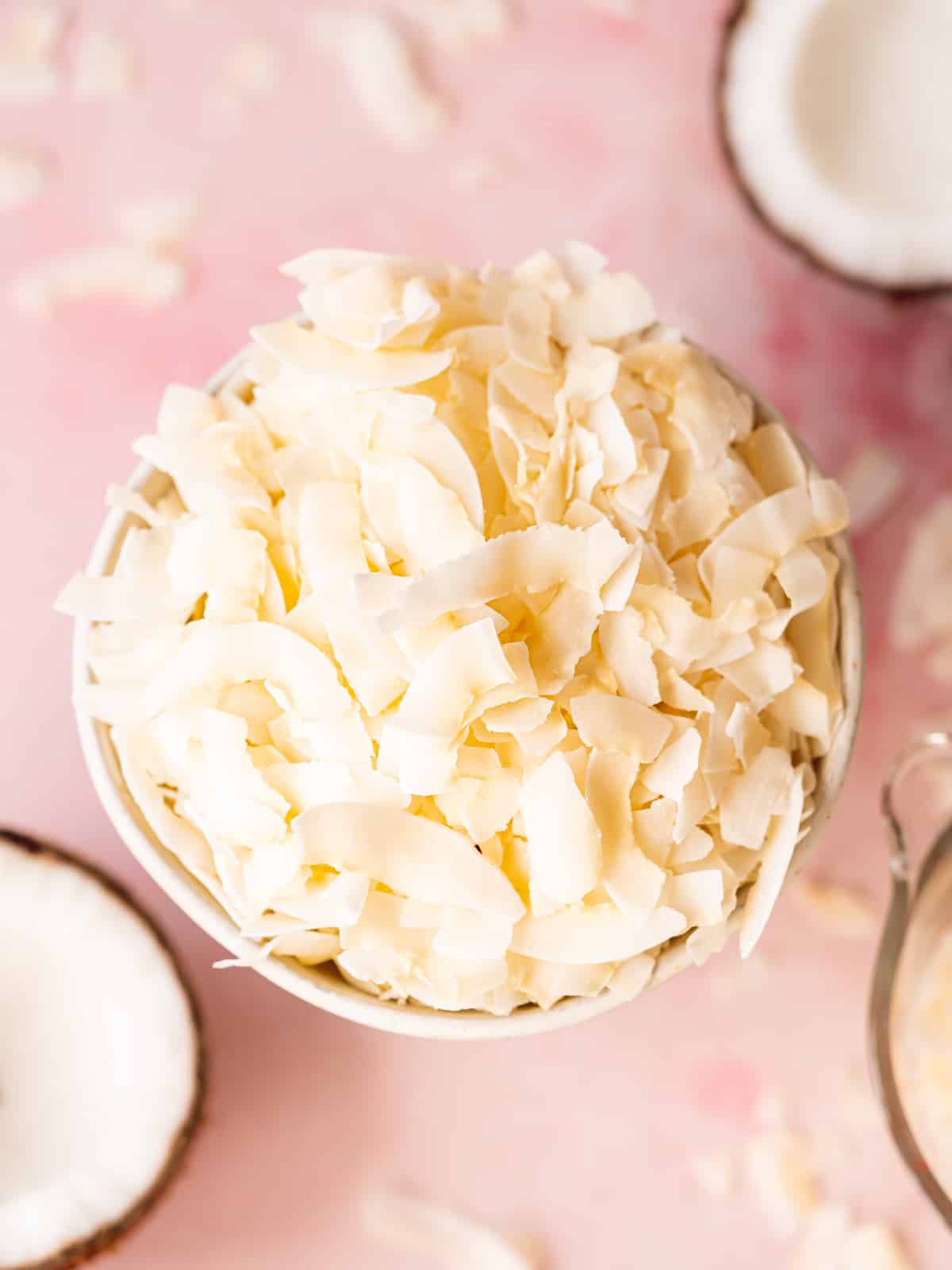
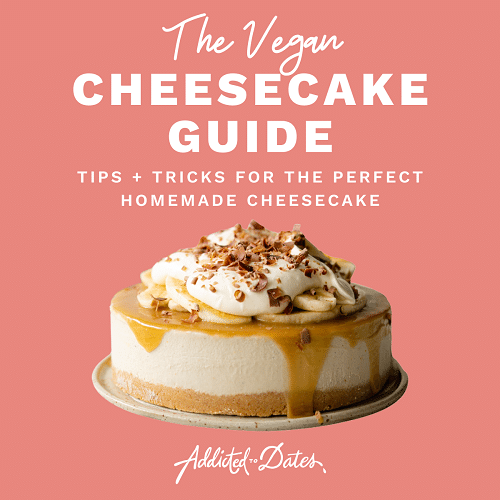
Get Your Free E-Book!
Sign up to the Addicted to Dates newsletter for your FREE Guide To Vegan Cheesecakes!
🥣 Instructions
Making your own coconut butter is easy, all you need is a little patience and a food processor or high-powered blender. Here are the images to help you get a visual of the steps involved. Please refer to the printable recipe card at the end of this page for the complete list of ingredients, quantities, and instructions:
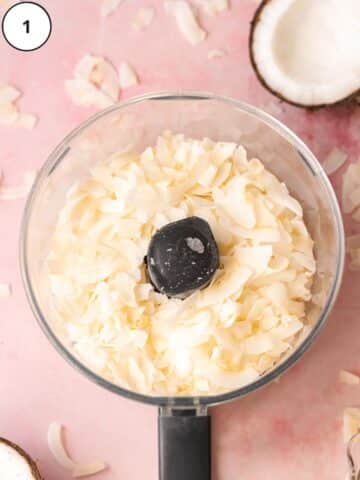
Add 200g (two-thirds) of the coconut flakes to your food processor. If your food processor is large (min 3 liter capacity) you can go ahead and add all of the coconut flakes at once.

Blitz the coconut for about 1 minute until the flakes have ground down and resemble coconut shreds.
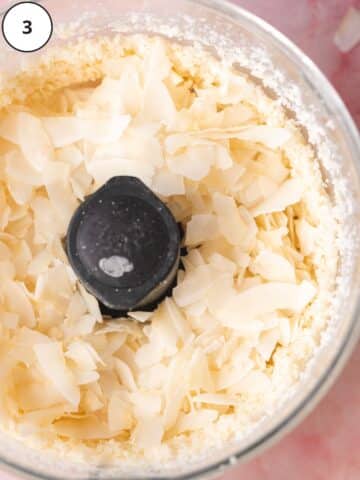
Add in the remaining coconut flakes and continue to blend at high speed.
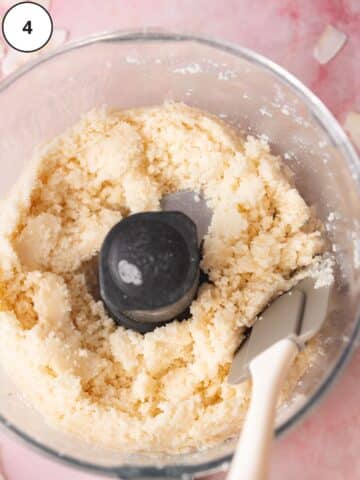
After a couple of minutes, the coconut will resemble a sand consistency. Scrape down the sides of the bowl with a rubber spatula.

Continue to blend until you have a creamy consistency and all of the coconut has been broken down into smooth coconut butter. Every so often, turn off the food processor and scrape down the sides of the bowl.
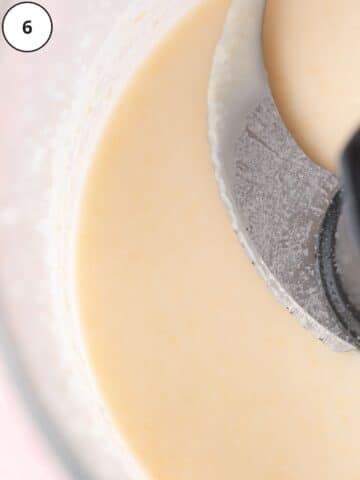
The entire process will take up to 10 minutes. You'll know the coconut butter is ready once it has a runny liquid consistency.
🍫 Variations
- Toasted Coconut Butter: Add an extra dimension of flavor by toasting your coconut flakes first before processing. FYI, toasted coconut spread is particularly delicious with a pinch of salt. Note, that toasted coconut butter will have a darker, more golden appearance.
- With Different Nut Butter: Try mixing this puréed coconut into your favorite nut butters (coconut almond butter would be lovely!) for a fun twist.
- Add In Flavors: Add flavorings like vanilla extract, citrus zest, sweeteners like sugar or agave, or powders like cocoa, maca, or matcha or strawberry and raspberry powder. Note that adding liquid sweeteners will result in a less drizzleable consistency, as adding water-based ingredients to fats can cause them to seize.
💭 Recipe Tips
Use a sturdy food processor or high-speed blender. Make sure it's powerful enough to handle blending the coconut into a smooth butter.
Don't overload your food processor. It's better to work in smaller batches to ensure even blending and creamy texture.
Patience is key. The best coconut butter takes time to come together. Be patient and blend in intervals, scraping down the sides of the bowl as needed. It might take 5-10 minutes or more to achieve that silky texture we're after. If the mixture seems too thick or dry, you can add a touch of coconut oil to help things along.
If your coconut flakes are too cold or clumpy, gently warm them in the oven or a dry pan over low temperature for a few minutes. This can help speed up the blending process.
🔪 Serving Suggestions
There are so many different ways to enjoy coconut butter in recipes, both sweet and savory. Here are some of my favorite ways to use it:
- Coconut-Boosted Milkshake: Blend a spoonful of coconut butter with your favorite vegan ice cream and a splash of dairy-free milk. Vanilla and mango are both fantastic options.
- Breakfast Topper: Slather coconut purée over a stack of pancakes, waffles, and toast, or swirl into yogurt or smoothies.
- Frozen Coconut Bites: Spread the coconut butter between two banana slices and freeze them for a quick and easy dessert. Dip the frozen bites in melted vegan dark chocolate for an extra indulgence.
- Coconut Energy Bars: Swap the almond butter in these date energy bars for coconut butter. Mix with medjool dates, vanilla, salt, and your favorite nuts and seeds. Roll into bite-sized balls or bars and refrigerate for a quick, energy-packed snack.
- Savory: Stir a tablespoon into curries, stirfries, or soups for an instant rich tropical flavor.
💬 FAQs
Coconut butter is made from the fibrous meat of the coconut. It has a thicker, creamy texture akin to nut butter with a slightly sweet coconutty flavor. Coconut oil, on the other hand, is extracted solely from the coconut's fat. Coconut oil can be refined to give it a higher smoke point and remove the coconut flavor, or remain raw/unrefined with more of an intense coconut flavor.
To compare the two, coconut oil is more versatile in cooking due to its high smoke point, while coconut butter is more of a spread and/or flavor-booster for your favorite recipes.
Store your coconut butter in a clean, dry, and airtight container or glass jar at room temperature for up to 2 weeks, or in the fridge or freezer for a few months. It might solidify over time or in cold conditions, so gently warm it in hot water or give it a quick whirl in the food processor before use.
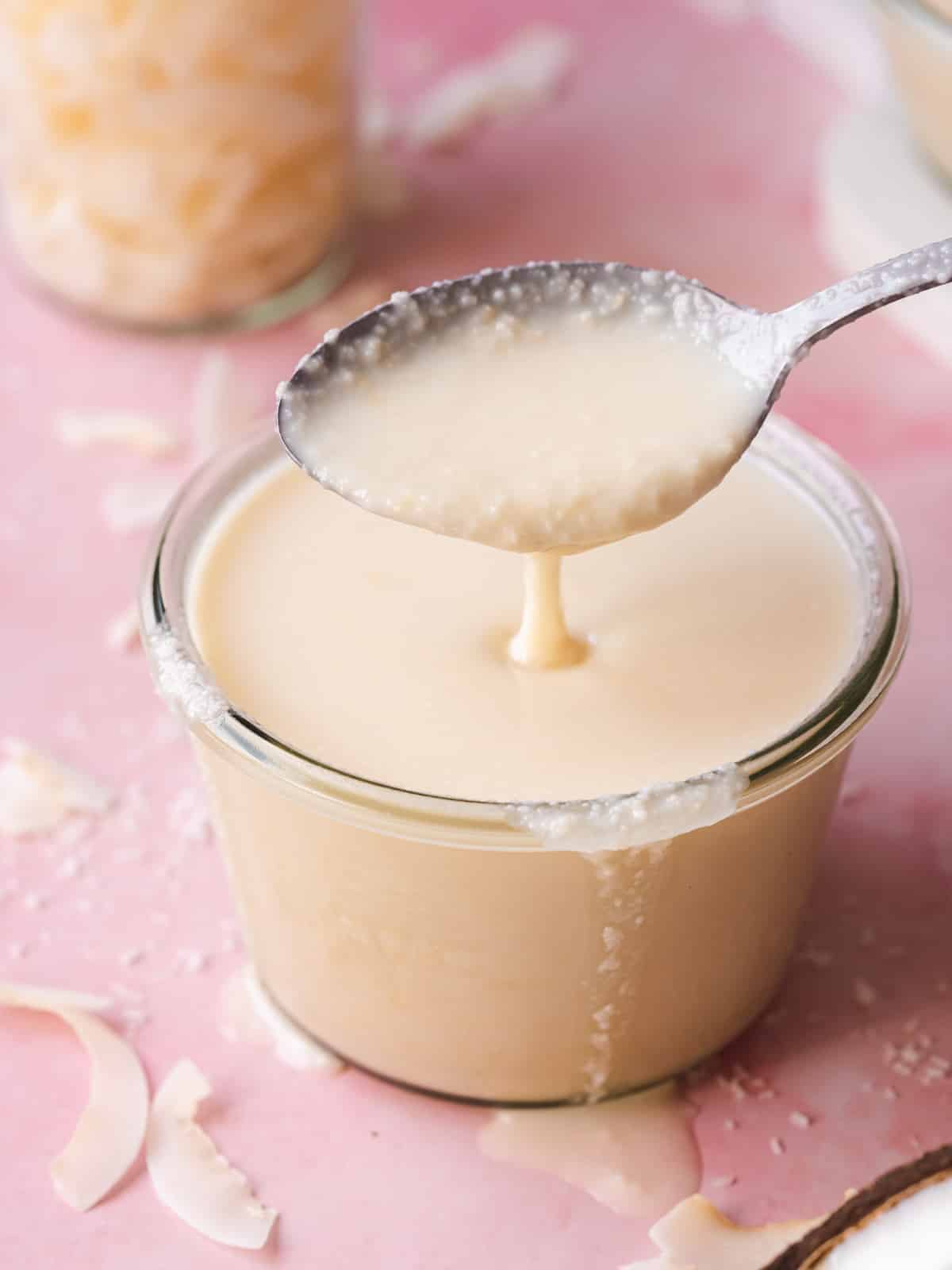
🍯 More Homemade Spreads
📖 Recipe
How To Make Coconut Butter (Coconut Manna)
Equipment
Ingredients
- 300 g (3½ cups) unsweetened dried coconut flakes *note 1
Instructions
- Add 200g (⅔) of the coconut flakes to your food processor and blitz for about 1 minute until the flakes have ground down to a shredded consistency.Note: If you're using a large food processor (min 3 liter capacity) you can go ahead and add all of the coconut flakes at once. If your food processor is less than that (mine is 2.6 liter), I recommend adding ⅔ of the flakes first to make space in the jug.
- Add in the remaining coconut flakes and continue to blend. After a couple of minutes, the coconut will resemble a sand consistency. Scrape down the sides of the bowl with a spatula.
- Continue to blend until you have a creamy consistency and all of the coconut has been broken down. Every so often, turn off the food processor and scrape down the sides of the bowl. The entire process will take up to 10 minutes.
- Storage: Transfer the coconut butter to a sealed airtight jar for storage. Keep it at room temperature in a dark cupboard for up to 2 weeks, or in the refrigerator for up to a couple of months. Depending on the climate/time of year, it will remain runny in hotter climates and it will solidify in colder climates/in the fridge.To bring the coconut butter back to a runny consistency, simply warm it gently over a double boiler (bain marie) or heat it on low in the microwave.
Notes
- Unsweetened Dried Coconut Flakes: Use high-quality unsweetened, organic coconut flakes (also known as coconut chips) for the best flavor. Also, check the expiration date on your dried coconut to ensure it's fresh. You can swap in unsweetened shredded coconut or desiccated coconut if needed, using the same weight amount.
© addictedtodates.com. All content and images are protected by copyright. If you want to share this recipe, please do so using the share buttons provided. Do not screenshot or republish the recipe or content in full. Instead, include a link to this post for the recipe. Thank you!

